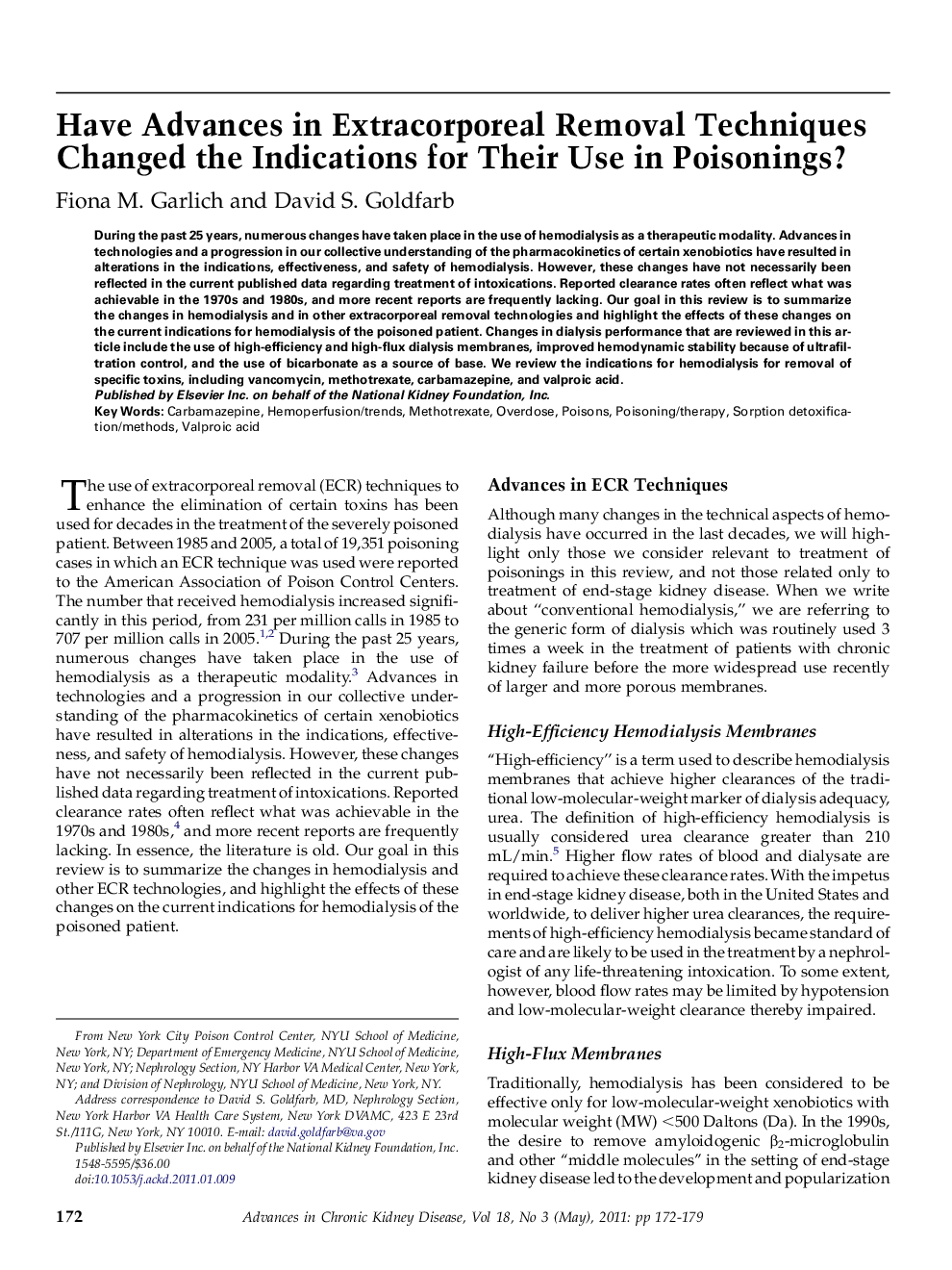| کد مقاله | کد نشریه | سال انتشار | مقاله انگلیسی | نسخه تمام متن |
|---|---|---|---|---|
| 3846671 | 1248337 | 2011 | 8 صفحه PDF | دانلود رایگان |
عنوان انگلیسی مقاله ISI
Have Advances in Extracorporeal Removal Techniques Changed the Indications for Their Use in Poisonings?
دانلود مقاله + سفارش ترجمه
دانلود مقاله ISI انگلیسی
رایگان برای ایرانیان
کلمات کلیدی
موضوعات مرتبط
علوم پزشکی و سلامت
پزشکی و دندانپزشکی
بیماریهای کلیوی
پیش نمایش صفحه اول مقاله

چکیده انگلیسی
During the past 25 years, numerous changes have taken place in the use of hemodialysis as a therapeutic modality. Advances in technologies and a progression in our collective understanding of the pharmacokinetics of certain xenobiotics have resulted in alterations in the indications, effectiveness, and safety of hemodialysis. However, these changes have not necessarily been reflected in the current published data regarding treatment of intoxications. Reported clearance rates often reflect what was achievable in the 1970s and 1980s, and more recent reports are frequently lacking. Our goal in this review is to summarize the changes in hemodialysis and in other extracorporeal removal technologies and highlight the effects of these changes on the current indications for hemodialysis of the poisoned patient. Changes in dialysis performance that are reviewed in this article include the use of high-efficiency and high-flux dialysis membranes, improved hemodynamic stability because of ultrafiltration control, and the use of bicarbonate as a source of base. We review the indications for hemodialysis for removal of specific toxins, including vancomycin, methotrexate, carbamazepine, and valproic acid.
ناشر
Database: Elsevier - ScienceDirect (ساینس دایرکت)
Journal: Advances in Chronic Kidney Disease - Volume 18, Issue 3, May 2011, Pages 172-179
Journal: Advances in Chronic Kidney Disease - Volume 18, Issue 3, May 2011, Pages 172-179
نویسندگان
Fiona M. Garlich, David S. Goldfarb,